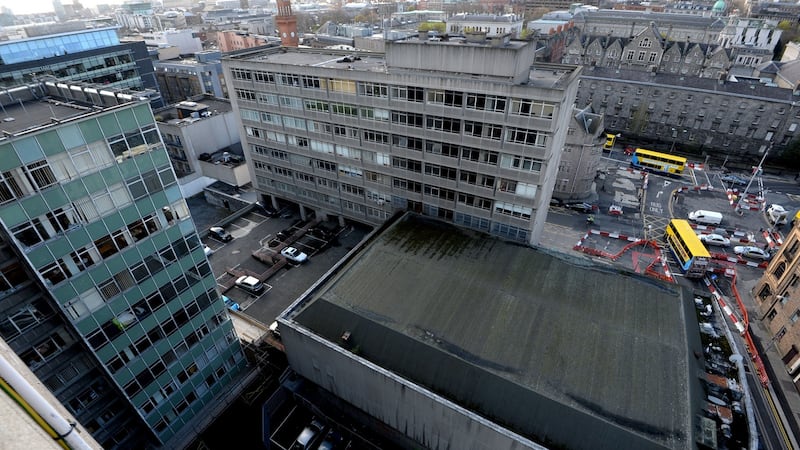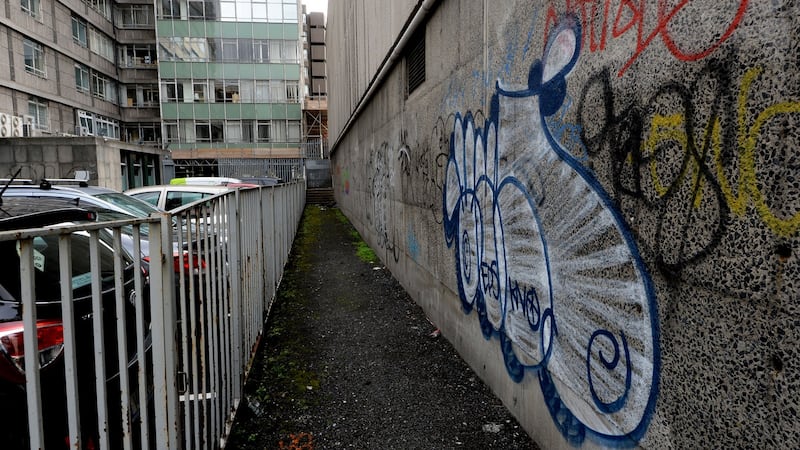Plans to redevelop Hawkins House, announced with great fanfare last June, have run into problems with Dublin City Council’s planners seeking a wide range of further information.
The Office of Public Works in collaboration with Nama and Mazars, as receivers, had described the scheme as a "once-in-a-generation opportunity to create a new vibrant commercial and government office quarter in the city of Dublin".
It would involve demolishing Hawkins House, widely regarded as Dublin's ugliest 20th century building, and Apollo House on the corner of Tara Street and Poolbeg Street, replacing them with a new "environmentally sustainable" office complex.


Designed by Henry J Lyons and Partners and Móla Architecture, the replacement buildings would range in height from five to 12 storeys, arranged around a new pedestrian route that would run roughly on a diagonal through the site.
But the planners are concerned that the proposal in its current form “will not make a sufficient contribution to improving the environment of Poolbeg Street and could negate the positive aspects of the overall public realm masterplan”.
Accordingly, the architects have been requested to “consider the merits of providing a setback of the building line along Poolbeg Street”, which is currently fronted by a small boundary wall enclosing a large surface car park around Hawkins House.
“Further details of the proposals for Poolbeg Street are required in order to assess the impact of the proposals,” the planners said, adding – quite incredibly – that “the removal of all car parking is not considered necessary or desirable”.
The applicants have also been requested to consider how to “rationalise the number of vehicular accesses serving the masterplan site and . . . explore the provision of a shared vehicular access with the Apollo House site”.
Concerns have also been expressed by the planners about the visual impact of upper levels of the complex as viewed from further west along the Liffey quays, so they want the architects to review the height, massing and façade treatment.
Further analysis of the impacts of the proposal on nearby residential buildings in terms of daylight, sunlight and overlooking are also required and this may also mean reducing the “footprint, form and massing” of the new buildings.
Perhaps the most problematic request for further information relates to a detailed submission from Transport Infrastructure Ireland (TII), the new agency formed by the merger of the National Roads Authority and the Railway Procurement Agency.
TII expressed serious concern that the demolition of Hawkins House would have a “detrimental impact on the capacity, safety or operational efficiency of the light rail network” – in particular, the southbound section of the Luas Cross City line.
The new agency objects to the "demolition methodology" proposed by structural engineers Cronin and Sutton, which would involve using a "high reach demolition excavator" to demolish a 13-storey façade about 10 metres from the Luas line.
“TII considers that the demolition methodology should contain a full risk assessment complete with mitigation measures detailing all interfaces to the LCC alignment and LCC works”, including measures to avoid collapse over the Luas line.
The agency also believes that there is “insufficient information” to determine all construction impacts adjoining the Luas and has requested that the full construction methodology statement be submitted prior to a decision on the application.
What all of this underlines is the timescale mismatch between Luas Cross City construction works and the proposal to replace Hawkins House. Had the two proceeded in tandem, TII’s worries about the potential impacts would have been lessened.
Another major issue is that the current masterplan does not include College House on Townsend Street or the (now closed) Screen Cinema alongside it, neither of which is in the OPW's ownership nor under the control of Nama or Mazars.
College House, which was built after Hawkins House using the same template, is a dated, redundant office block that needs to be replaced by a new building brought forward to the original line of Townsend Street. The lumpen Screen needs to go too.
If this doesn’t happen, the proposed diagonal pedestrian route running through the Hawkins House site would come to a dead end, instead of extending all the way from the corner of Tara Street and Poolbeg Street to the corner of Townsend Street.
It should never be forgotten that the horror of Hawkins House, designed by London-based architects TP Bennett for the Rank Organisation, replaced Dublin's much-loved Theatre Royal, which was on a par with New York's Radio City Music Hall.
Television was blamed for the Royal's closure, but one of its star performers, comedian Cecil Sheridan, was right when he said on its last show night that the real reason was "how much money you can make out of a square foot of property".









